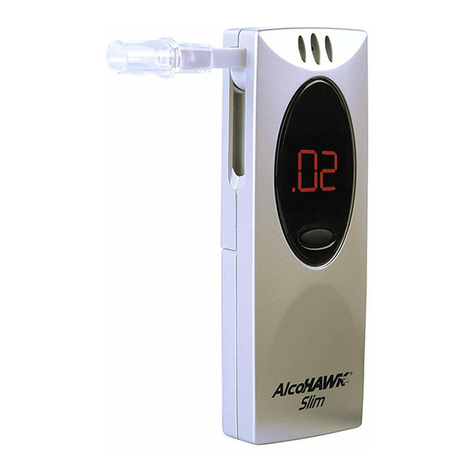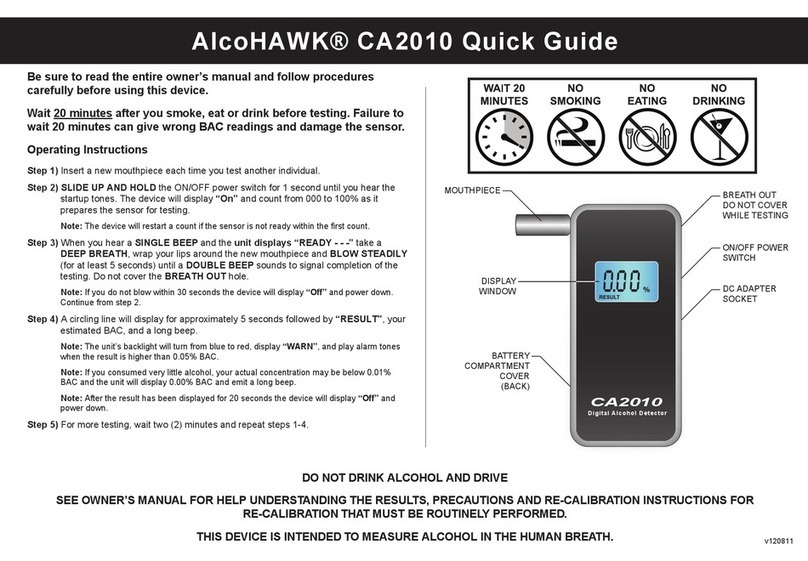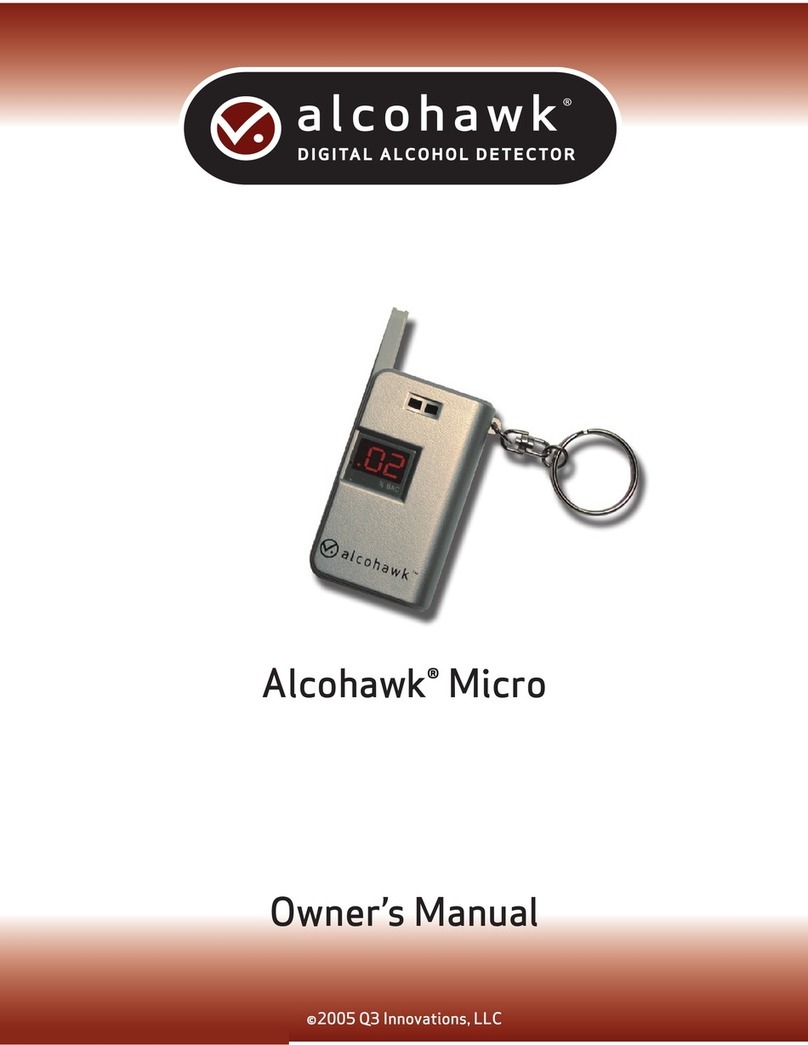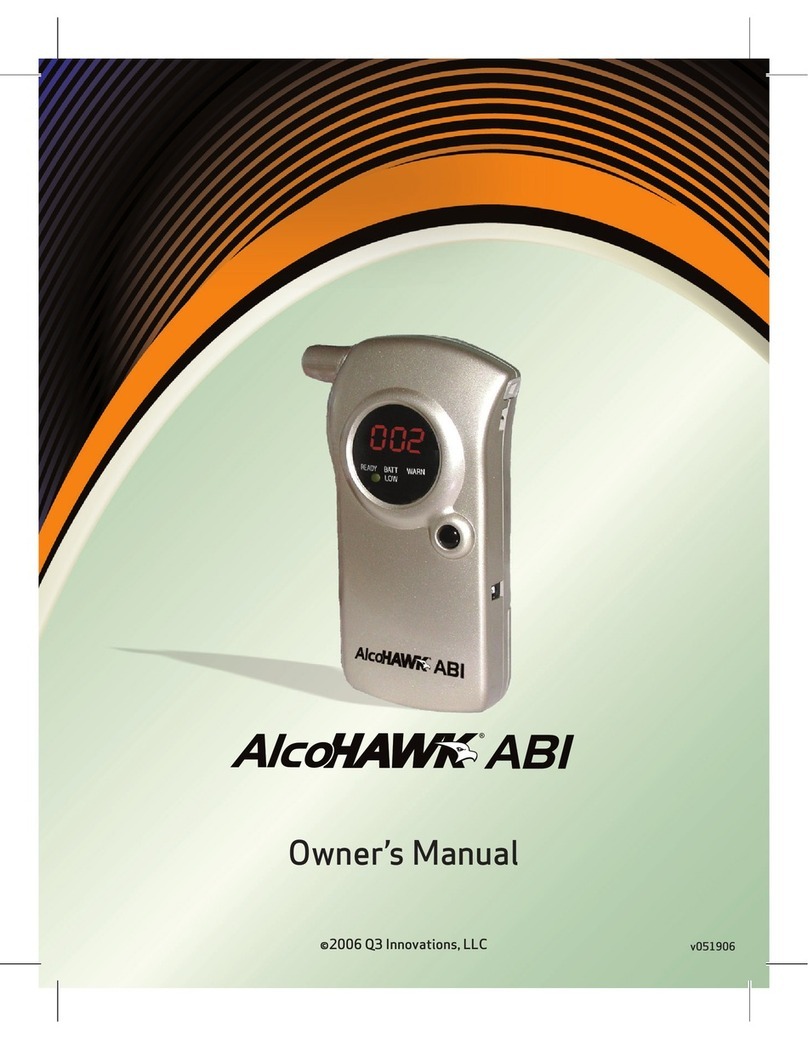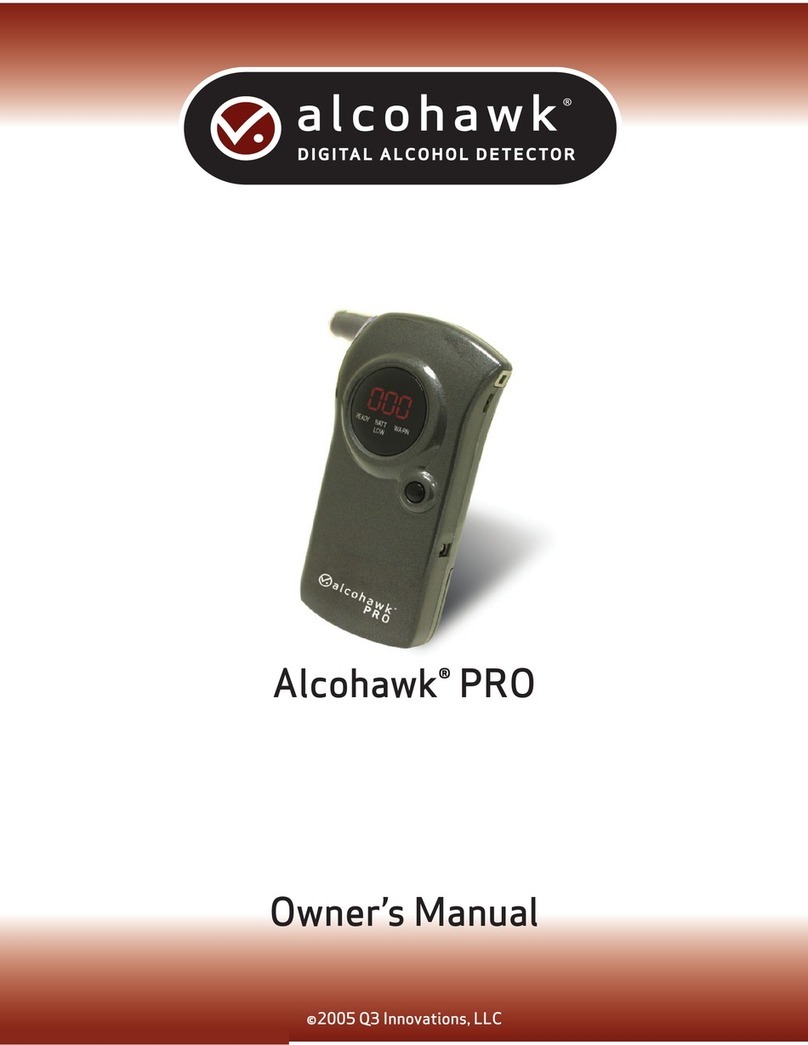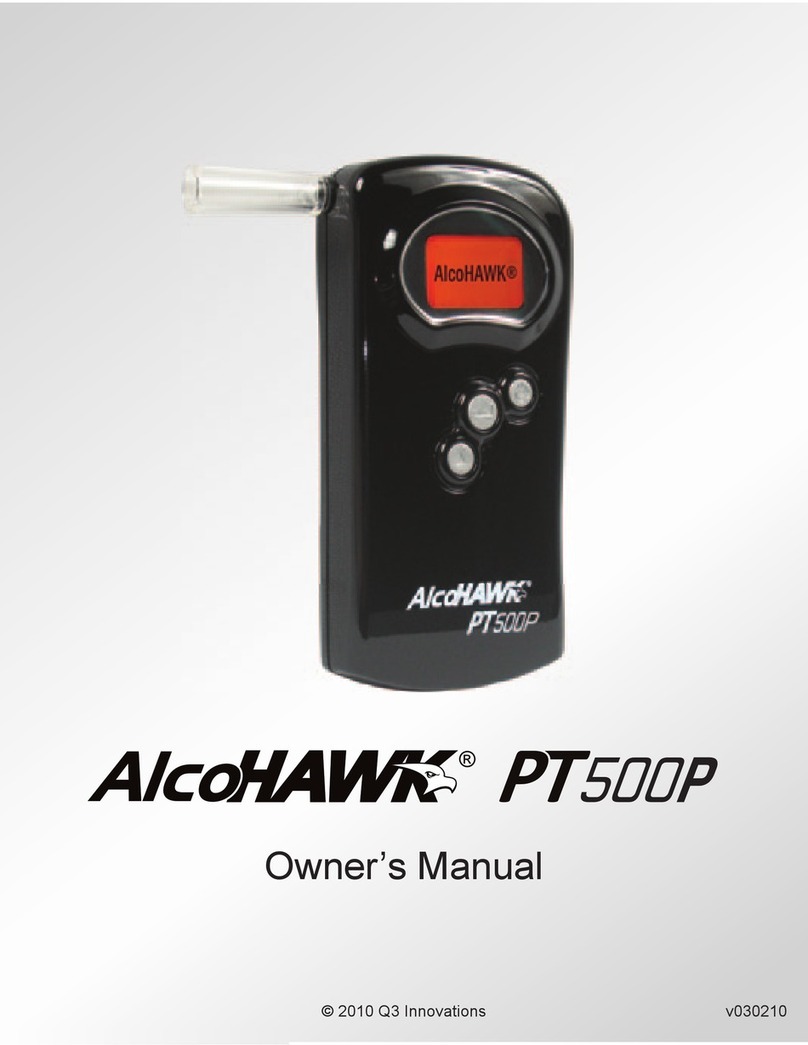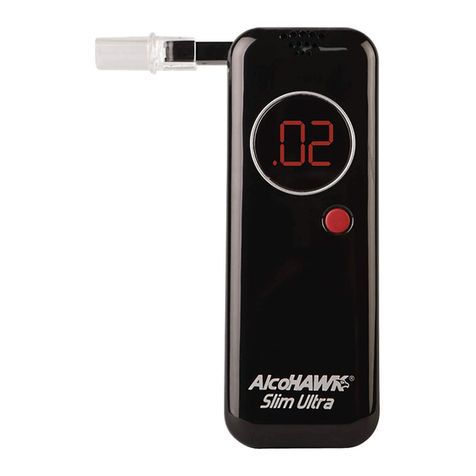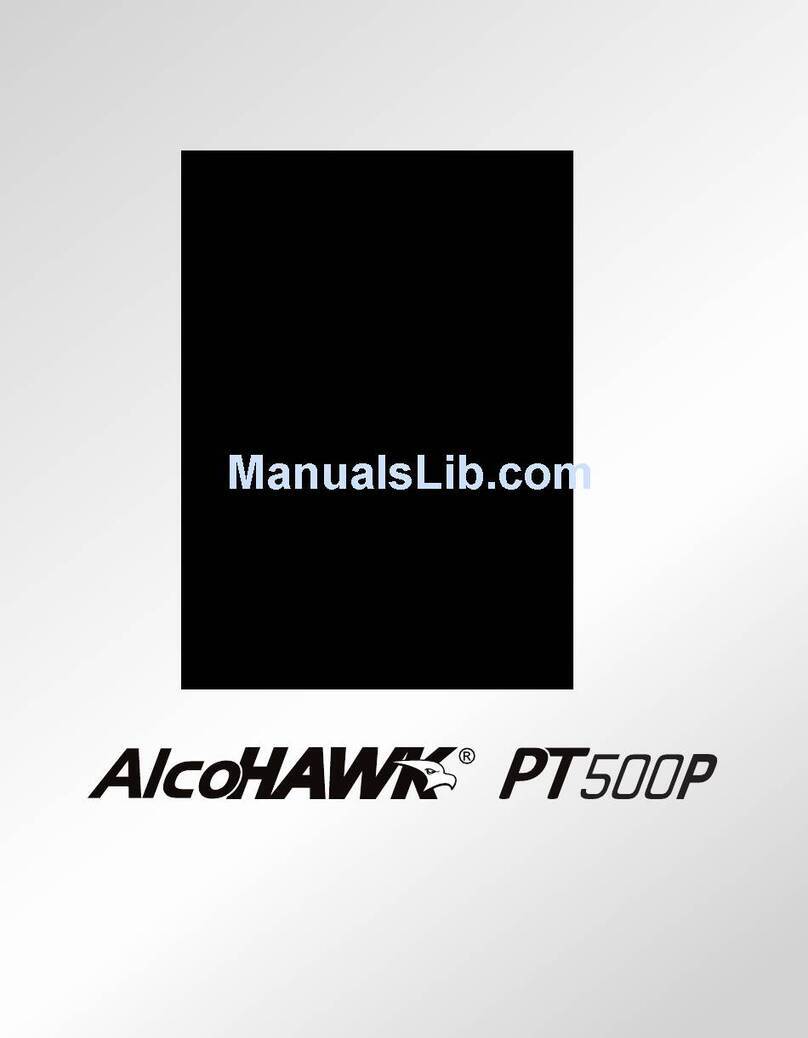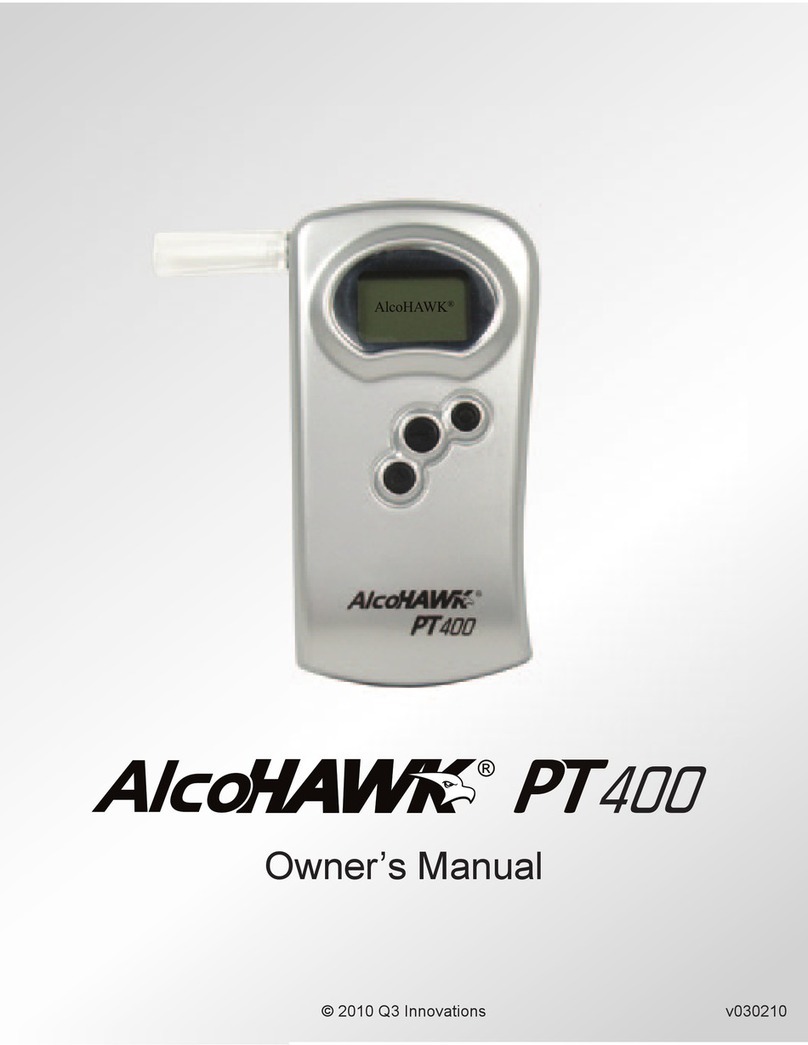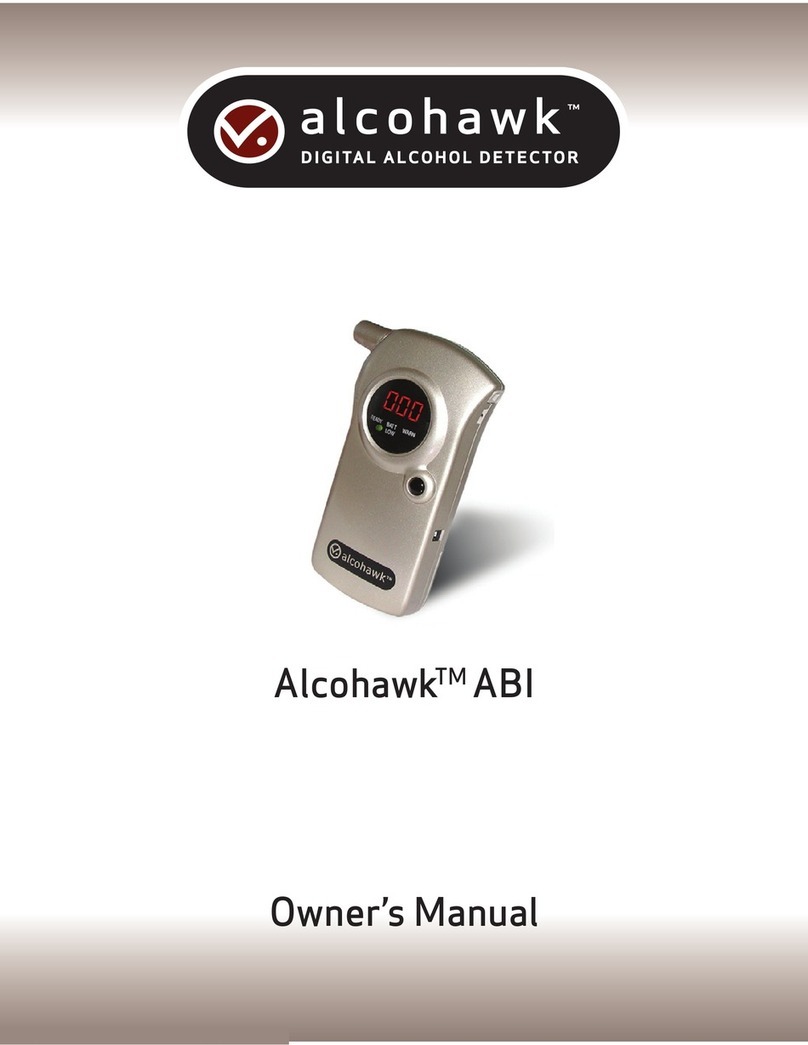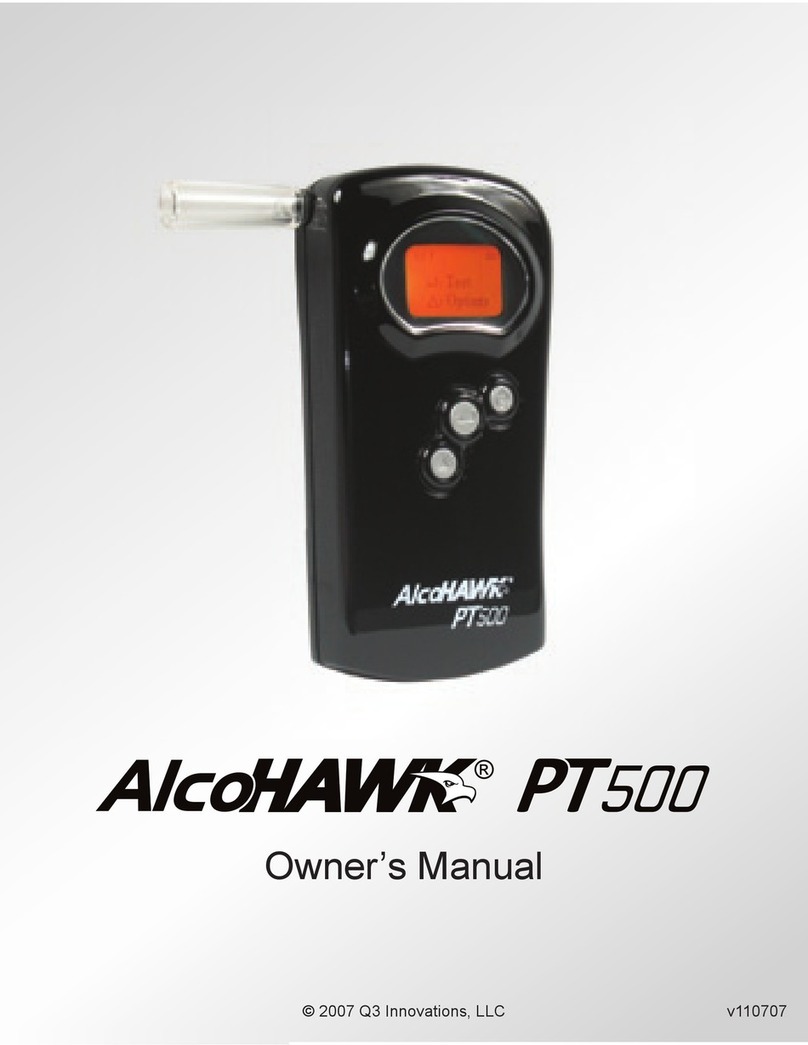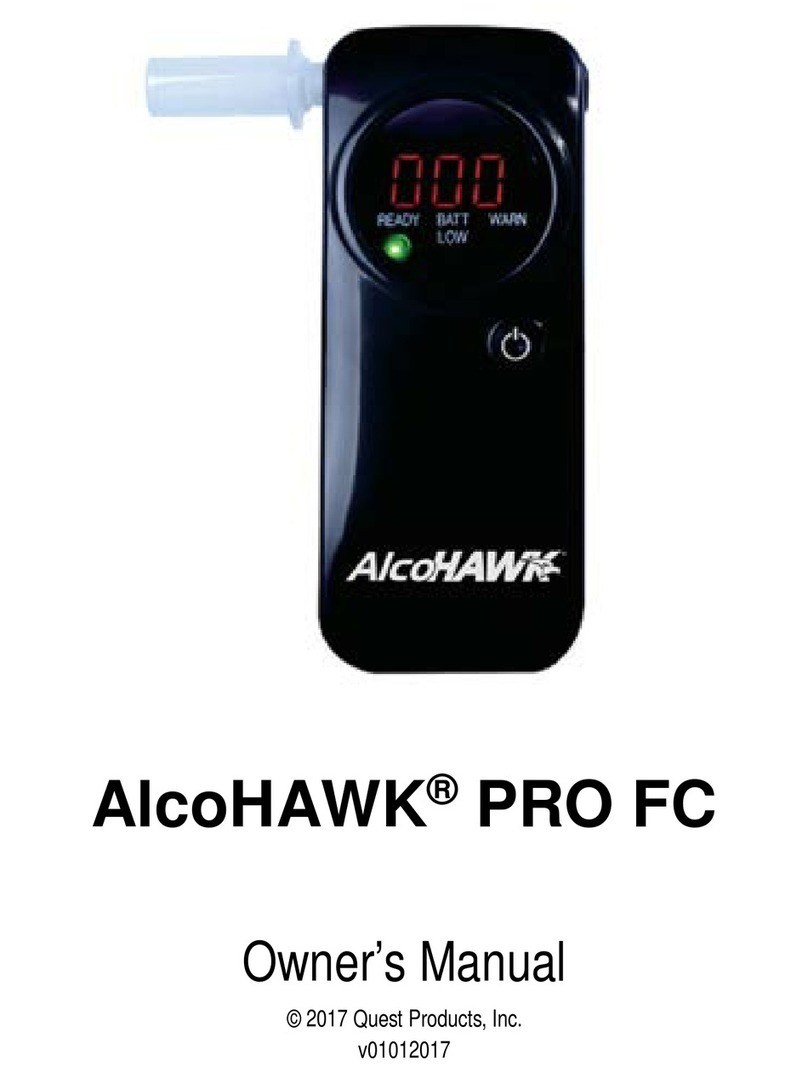When performing a breath alcohol test, it is necessary to analyze an
alveolar or deep lung air sample. If the test sample is not based on a
deep lung sample, the sample analyzed could be diluted with breath of
lower alcohol concentration from the upper respiratory tract. This would
result in a lower than optimum test result. As a result, breath alcohol
testers listed on the Department of Transportation (DOT), National
Highway Traffic Safety Administration’s (NHTSA) Conforming Products
List of Screening Devices To Measure Alcohol in Bodily Fluids, typically
have protocols which require the subject to deliver at least 1.5 liters, or
continuous blowing into the unit for least five (5) seconds.1 Otherwise,
the testing can be aborted or marked as unacceptable.
1Federal Register: May 4, 2001 (Volume 66, Number 87)
Description Of Testing System
This device contains a sensor chip designed to test for the presence of
alcohol. A thick film heater is printed on the reverse of the chip placed
in the plastic housing. The metal oxide material is heated to a specific
temperature. The resistance of sensing material changes rapidly
according to gas concentration changes, thereby enabling the reading
of alcohol concentration by resistance measurement. This alcohol
concentration is directly related (as explained in the above paragraph)
to the concentration of alcohol in the blood. Therefore, this device can
give a reading that reflects an estimate of the concentration of alcohol in
the blood.
Dose-specific Effects Of Alcohol Intoxication
The effects of alcohol intoxication are greatly influenced by individual
variations among users, as well as other factors such as altitude and
air temperature. The following are general dose-specifics effects of
alcohol, although some users may become intoxicated at a much lower
BAC than shown below. Because a safe reading on a breath alcohol
screener does not mean that a driver’s reaction times can respond to
any emergency encountered, do not drink alcohol and drive.
Some states prohibit driving with a .08% BAC or above reading, and
in many states, individuals can be prosecuted for driving under the
influence at any level.
Some states also prohibit driving commercial vehicles or any vessel
with .04% or more. There is no safe way to drive under the influence of
alcohol. Even one drink can make you unsafe.
BAC Dose-Specific Effects2
0.02-0.03%3 Generally no loss of coordination, slight euphoria or loss of shyness.
Depressant effects are not apparent.
0.04-0.06% General feeling of well-being, relaxation, lower inhibitions, sensation
of warmth. Euphoria. Some minor impairment of reasoning and
memory, lowering of caution. Driving skills may be impaired at this
level of intoxication.
0.07-0.09% Slight impairment of balance, speech, vision, reaction time, and
hearing. Euphoria. Judgment and self-control are reduced, and
caution, reason and memory are impaired. Driving skills are always
impaired at this level of intoxication.
0.10-0.125% Significant impairment of motor coordination and loss of good
judgment. Speech may be slurred; balance, vision, reaction time and
hearing will be impaired. Euphoria.
0.13-0.15% Gross motor impairment and lack of physical control. Blurred
vision and major loss of balance. Euphoria is reduced and dysphoria
is beginning to appear.
0.16-0.20% Dysphoria (anxiety, restlessness) predominates, nausea may appear.
The drinker has the appearance of a “sloppy drunk.”
0.25%-0.29% Needs assistance in walking; total mental confusion. Dysphoria with
nausea and some vomiting.
0.30%-0.39% Loss of consciousness.
0.40% + Onset of coma, possible death due to respiratory arrest.
2 Bailey, William J., Drug Use in American Society, 3rd ed., Minneapolis: Burgess, 1993.
3 Some individuals may experience impairment at BAC levels at .03% or even lower.
2 3
